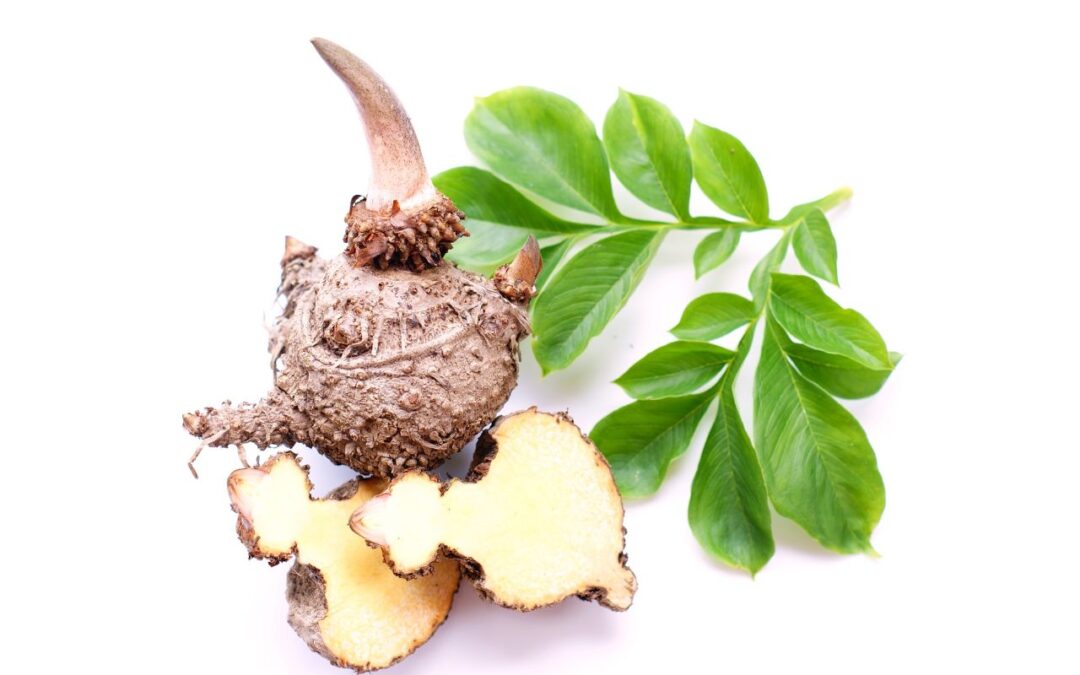Understanding Konjac Root
Konjac, scientifically known as Amorphophallus konjac, is a perennial plant native to Southeast Asia. It has been used in traditional Asian cuisine and medicine for centuries. The root of the Konjac plant is the primary part that is utilized for its various health benefits.
Nutritional Profile of Konjac Root
Konjac root is prized for its unique nutritional composition:
1. Glucomannan: The standout feature of Konjac root is its high content of glucomannan, a water-soluble dietary fiber. Glucomannan makes up a significant portion of the root and is responsible for many of its health benefits.
2. Low Calories: Konjac root is incredibly low in calories, making it an excellent addition to a calorie-controlled diet.
3. Minimal Fat and Protein: The root is nearly fat-free and has minimal protein content.
4. Rich in Fiber: Konjac root is exceptionally rich in dietary fiber, with glucomannan acting as a prebiotic fiber source, benefiting gut health.
Potential Health Benefits
1. Weight Management
Konjac root’s glucomannan content is renowned for its potential to aid in weight management. When consumed, glucomannan expands in the stomach, promoting a feeling of fullness and reducing the intake of calories in subsequent meals. This can be especially beneficial for those looking to control their appetite and calorie intake.
2. Improved Gut Health
The high fiber content in Konjac root supports digestive health. It acts as a prebiotic, nourishing beneficial gut bacteria and promoting a healthy gut microbiome. This can lead to better digestion and improved overall well-being.
3. Blood Sugar Control
Some studies suggest that glucomannan may help regulate blood sugar levels, making it potentially beneficial for individuals with diabetes or those at risk of developing the condition.
4. Cholesterol Management
Konjac root has also been linked to improved cholesterol levels. It may help lower LDL (bad) cholesterol and reduce the risk of heart disease.
How to Incorporate Konjac Root into Your Diet
- Konjac Noodles: Konjac root is often used to make low-calorie, low-carb noodles. These can be used in place of traditional pasta in various dishes.
- Supplements: Glucomannan supplements are available in various forms, such as capsules or powders, and can be taken as part of your daily routine.
- Konjac Flour: Konjac flour can be used as a thickening agent in recipes, or you can use it to prepare a traditional Japanese dish called “konnyaku.”
- Snack Foods: Some companies produce Konjac-based snacks, including chips and crackers, as a healthier alternative to traditional snacks.
Conclusion
Konjac root is a nutritional powerhouse with the potential to support weight management, improve gut health, regulate blood sugar levels, and lower cholesterol. However, as with any dietary change or supplement, it’s essential to consult with a healthcare professional before adding Konjac root to your diet, especially if you have underlying health conditions. If you’re looking to explore the potential health benefits of this superfood, start by incorporating it into your diet in moderation and experience its impact on your overall well-being. As always, a balanced and varied diet, combined with a healthy lifestyle, is key to reaping the full benefits of any superfood, including Konjac root.





0 ความคิดเห็น